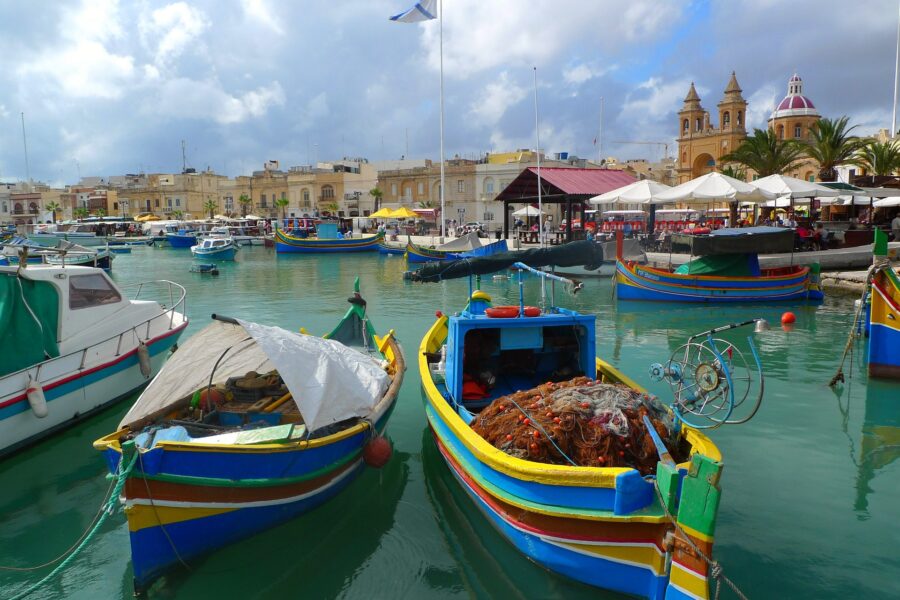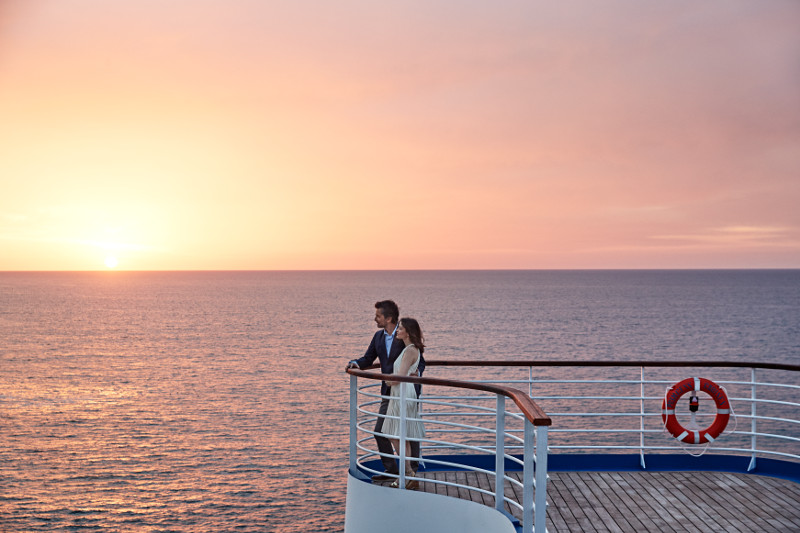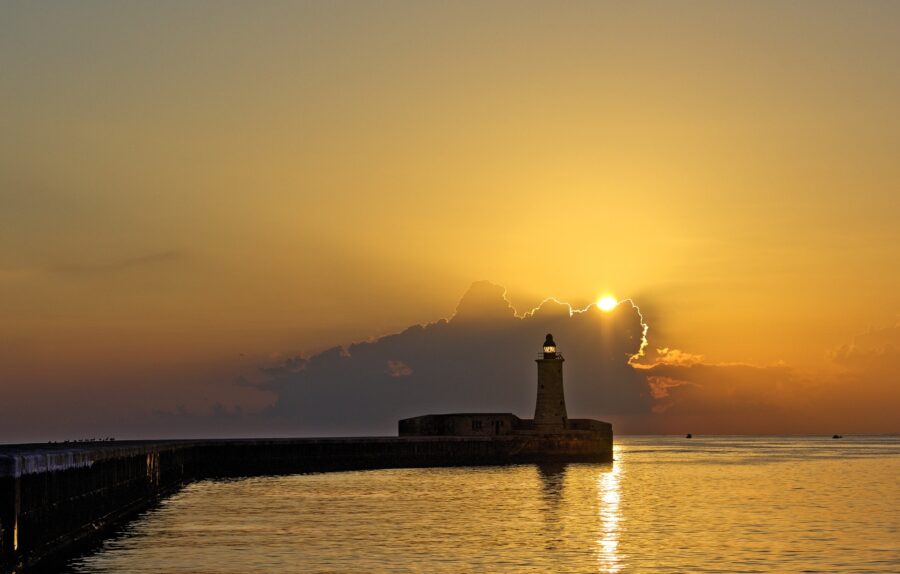Enchanted Med & Aegean
Explore some of the finest destinations in the Med & discover the beautiful Aegean onboard the wonderful Enchanted Princess.
What's Included
- Flight from Dublin to Naples
- Airport transfers to the port
- 10 nights onboard the 5* Enchanted Princess based on 2 sharing
- Ocean MedallionTM wearable smart device
- Superb dining on a full board basis
- Entertainment onboard
- Return transfer from port to airport
- Flight from Rome to Dublin
- Taxes, charges and 20kg check-in bag per person
Enchanted Princess
An extraordinary new cruise experience. Setting sail in Europe in 2020.
Enchanted Princess℠, the fifth in line of our Royal-class ships, shares all of their spectacular style and luxury, and introduces new attractions all her own. Get ready for exquisite, one-of-a-kind dining experiences. The most pools and whirlpool hot tubs ever. World-class entertainment venues hosting dazzling performances. As well as the breathtaking new Sky Suite, with expansive views from our largest balcony at sea.
Click here for more information about Enchanted Princess including Deck Plans.
Princess

Agent
Booking Remarks
Prices are per person and based on two sharingInclusive of taxes and service charges as indicated
Non-refundable deposit of 15%. Full payment due 16 weeks from departure.
Optional Insurance available (call for details)
Child and family prices available on request
These prices are guidelines only and are subject to change and availability. Pricing will be confirmed at time of booking.
Itinerary
Naples, Italy
On arrival in Naples, you will be transferred to the port to board your cruise ship, the 5* Enchanted Princess.
Messina, Sicily, Italy
Messina may well be your first sight of Sicily, and – from your holiday cruise ship – it’s a fine one, the glittering town spread up the hillside beyond its sickle-shaped Mediterranean harbour.
On a shore excursion you can discover Messina’s most important monument, the Duomo, which epitomizes the city’s phoenix-like ability to re-create itself from the ashes of its last disaster. It’s the reconstruction of a twelfth-century cathedral erected by Roger II, one of a series of great Norman churches of Sicily that include the sumptuous cathedrals of Palermo and Cefalù. The Duomo’s detached campanile, or bell tower, claims to be the largest astronomical clock in the world, and puts on its best show at noon every day, when a bronze lion (Messina’s ancient emblem) unleashes a mighty roar over the city that can be quite alarming if you’re not expecting it!
Corfu, Greece
Still recognisable as the idyllic refuge where the shipwrecked Odysseus was soothed and sent on his way home, Corfu continues to welcome weary travellers with its lush scenery, bountiful produce and pristine beaches.
Since the 8th century BC, the island the Greeks call Kerkyra has been prized for its untamed beauty and strategic location. Ancient armies fought to possess it, while in the early days of modern Greece it was a beacon of learning. Corfiots remain proud of their intellectual and artistic roots, with vestiges of the past ranging from Corfu Town’s Venetian architecture to British legacies such as cricket and ginger beer.
While certain regions of the island have succumbed to overdevelopment, particularly those close to Corfu Town, Corfu is large enough to make it possible to escape the crowds. Venture across cypress-studded hills to find vertiginous villages in the fertile interior, and sandy coves lapped by cobalt-blue waters.
Bar, Montenegro
Bar is a town and seaport in Coastal region of Montenegro. It is the capital of the Bar Municipality and a center for tourism. According to the 2023 census, the city proper had 15,868 inhabitants, while the total population of Bar Municipality was 46,171.
Split, Croatia
Croatia’s second-largest city, Split (Spalato in Italian) is a great place to see Dalmatian life as it’s really lived. Always buzzing, this exuberant city has just the right balance between tradition and modernity. Step inside Diocletian’s Palace (a Unesco World Heritage Site and one of the world’s most impressive Roman monuments) and you’ll see dozens of bars, restaurants and shops thriving amid the atmospheric old walls where Split has been humming along for thousands of years.
To top it off, Split has a unique setting. Its dramatic coastal mountains act as the perfect backdrop to the turquoise waters of the Adriatic and help divert attention from the dozens of shabby high-rise apartment blocks that fill its suburbs. It’s this thoroughly lived-in aspect of Split that means it will never be a fantasy land like Dubrovnik, but perhaps it’s all the better for that.
At Sea
Chania, Crete
Weaving a tapestry of awe and wonder, Chania is a centuries-old mix of Minoan myths, well-preserved Venetian mansions, a mesmerizing Old Town complete with labyrinthine passageways, and atmospheric Kastelli Hill, once the site of a Roman acropolis. But Chania may be best known as the gateway to the breathtaking 4,000 year-old Minoan ruins at Knossos, home of the legendary King Minos and the part man and part bull known creature as the Minotaur. And around every corner of this idyllic area you’ll find picturesque villages, breathtaking views and architectural wonders that will remain with you for a lifetime.
Katakolon (Olympia), Greece
A holiday to Greece during a cruise of the Mediterranean means history and myth. Katakolon is a tiny seaside town in Greece in the bay of Agios Andreas, only 20 km away from the ancient site of Olympia.
The historic associations and resonance of Olympia, which for over a millennium hosted the most important Panhellenic games, are rivalled only by Delphi or Mycenae. It is one of the largest ancient sites in Greece, spread beside the twin rivers of Alfiós and Kládhios, and overlooked by the Hill of Krónos.
The sheer quantity of ruined structures can give a confusing impression of their ancient grandeur and function, but the site itself is picturesque, definitely deserving a visit on an excursion. The entrance to the site, located just 200m from the modern village, leads along the west side of the Altis wall, past a group of public and official buildings. The Prytaneion was the administrators’ residence, where athletes stayed and feasted at official expense.
You can see the ruins of a gymnasium and a palaestra (wrestling school), used by the competitors during their obligatory month of pre-games training. Beyond these stood the Priests’ House, the Theokoleion, a substantial colonnaded building in whose southeast corner is a structure adapted as a Byzantine church. The main focus of the Altis precinct is provided by the great Doric Temple of Zeus.
Built between 470 and 456 BC, it was as large as the Parthenon, a fact quietly substantiated by the vast column drums littering the ground. The temple’s decoration, too, rivalled the finest in Athens; partially recovered, its sculptures of Pelops in a chariot race, of Lapiths and Centaurs, and the Labours of Hercules, are now in the museum.
Valletta, Malta
The UNESCO-protected port of Valletta, the capital of the island of Malta, is one of the must-see stops for every Mediterranean cruise of merit.
You can admire this port, constructed in the second half of the 16th century by the Frenchman Jean de la Valette and moulded by the religious and military Order of Saint John of Jerusalem, from your ship even before disembarking. The over 300 monuments rising in little more than half a square kilometre make this a place with one of the greatest density of historical attractions to visit during a cruise, not mentioning other attractions such as its beaches, seaside locales and restaurants.
At Sea
Civitavecchia (Rome), Italy
Your cruise comes to an end as you sail into Civitavecchia port. After disembarkation, you will be transferred to the airport in Rome for your flight to Dublin.















